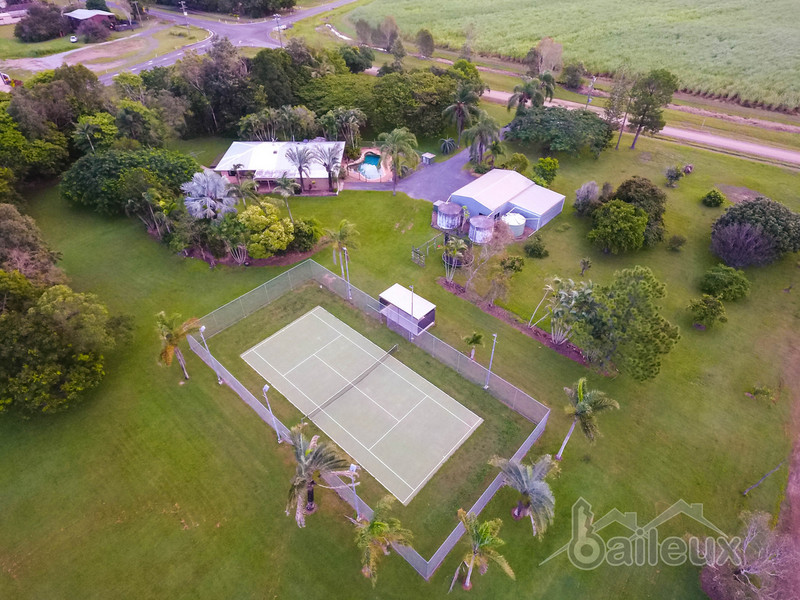RTA guide for tenants after a natural disaster
Summer is one of Queensland’s peak natural disaster seasons.
From October to April cyclones and severe storms with hail, lightning, damaging winds and flooding are more likely to impact the state.
But what should a tenant do if their rental property is impacted by a natural disaster?
The Residential Tenancy Authority (RTA) has published a checklist for tenants to use if their rental property is impacted by a natural disaster.
In this monthly tip, we take a closer look at this step-by-step guide.
>> READ MORE: GUIDE TO RENTING WITH PETS
1. Stay safe
For tenants, if a rental property is impacted by a natural disaster, it can be difficult to know where to start.
The first step is to stay safe. Staying safe must be the highest priority in the event of a natural disaster.
Tenants should follow any active public safety directives and only return to their rental property when it is safe to do so.
In the event a tenant must return to a property, they must ensure the electricity is off and only switched back on once it has been assessed by a professional and has been deemed safe.
2. Contact and assess
The next step, once tenants are safe, is to contact the property manager/owner to notify them of the situation as soon as possible.
A rental property significantly impacted during a natural disaster may need to be assessed by a qualified tradesman to determine whether it is livable or not.
A property is deemed unliveable under the Residential Tenancies and Rooming Accommodation Act 2008 (the Act) when it’s either fully or partially destroyed, or it can no longer be used lawfully as a residence because it doesn’t meet health and safety standards.
If the damage isn’t significant, the tenant or the property manager/owner can conduct an informal assessment of the property. This can be done individually or together.
For a property manager/owner or a third party to assess the property, the tenant must be given notice before they enter.
The RTA encourages tenants to take photos of any damage done to the rental property when they can safely access the property.
These photos can help both the tenant and property manager/owner assess the situation a and identify possible repairs.
Once the property has been assessed the tenant will need to through the tenancy options with the property manager/owner.
>> READ MORE: HOW TO HAVE A WASTE-FREE CHRISTMAS
3. Tenancy options
There are three options available to the tenant.
When a property becomes unlivable after a natural disaster the tenancy does not automatically end.
Even if the tenant has had to evacuate the property, they are responsible for paying rent until a notice is given to end the tenancy.
A tenancy will only end when the tenant and property manager/owner mutually agree to end the tenancy in writing or the property manager/owner gives the tenant a notice to leave (Form 12) on the grounds of non-liveability.
Similarly, the tenancy will end if a tenant gives a notice of intention to leave (Form 13) on the grounds of non-liveability or the Queensland Civil and Administrative Tribunal (QCAT) makes an order for the tenancy to end.
The day a notice to leave or notice of intention to leave due to non-livebility is given the tenancy agreement will end, unless the person issuing it chooses to provide a longer notice period.
The RTA says, notice to end the tenancy on the grounds of non-liveability must be given within one month of a natural disaster occurring.
Meanwhile, if a tenant is given a notice to leave (Form 12) on the grounds of non-liveability but thinks the property is still liveable and meets the health and safety requirements, the RTA suggest the tenant talk to the property manager/owner to see if together, they can come to an agreement.
If they are unable to reach agreement for next steps the RTA provides a free dispute resolution service that may be able to help.
The property manager/owner may make an urgent application to QCAT for a termination order and a warrant of possession if dispute resolution isn’t successful and the tenant fails to leave the property by the date on the notice to leave.
If the tenant wants to stay in the property while the damage is repaired, the property manager/owner and the tenant need to come to an agreement.
Firstly, health and safety requirements are a priority. If it is agreed the damaged property is safe to reside in while the repairs are being carried out, the tenant may be able to ask the property manager/owner for a rent reduction.
The RTA says rent reductions may occur if the property is damaged to the extent the standard has decreased substantially and/or services or facilities provided under the agreement are not available.
If a rent reduction is agreed upon, it must be documented in writing and both the tenant and property manager/owner should keep a copy.
If it is decided the property is unlivable or it needs extensive repairs, the tenant may choose to continue the tenancy but leave the property temporarily and return when it is fixed.
Similarly, in this situation, the tenant may be able to ask for a reduction in rent or no rent during this repair period. Or the tenant and property manager/owner can, on the grounds of non-liability, decide to end the current tenancy and then once the repairs are completed, sign a new agreement.
In either option, the rent amount will need to be negotiated. There are rules around when rent can be increased and a property manager/owner can not evict a tenant in favour of another that will pay higher rent.
>> READ MORE: GIFT-GIVING WITHOUT BREAKING THE BANK (OR THE ENVIRONMENT)
4. Repairs and insurance
The tenant is responsible for removing and cleaning their possessions including those damaged by a natural disaster.
While the property manager/owner most likely has building insurance, it is unlikely this won’t cover damaged items owned by the tenant.
If the tenant has contents insurance they may want to make a claim and the RTA recommends the tenant take photos or videos of damaged items.
The property manager/owner is responsible for the repairs of any fixtures, windows, doors, roof and carpet to bring the property back to its livable condition.
The RTA says these repairs should be organised in a reasonable timeframe and comply with relevant health and safety laws. However, natural disasters often put extra demand on trades, insurers and services so the tenant and property manager/owner should discuss timeframes for repairs and times for the repairs to be done.
If an agreement can’t be made, the RTA’s free dispute resolution service may be able to help or the tenant apply to QCAT for a repair order.
For more information, resources and support on what to do in the event a rental property has been impacted by a natural disaster visit the RTA’s natural disasters webpage.



